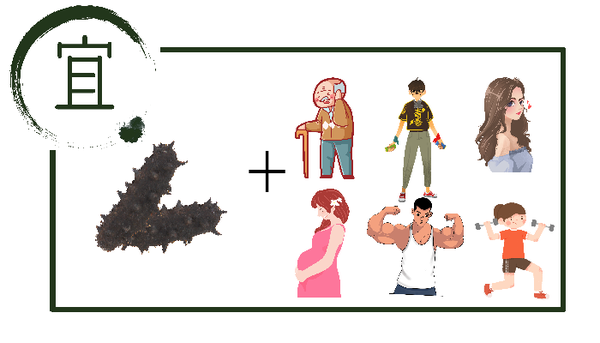红糙米的功效与作用禁忌和副作用
红糙米的功效与作用禁忌和副作用
红糙米是一种相对健康且受欢迎的大米品种,它是大米经过砻糠而成的,保留了大米的营养成分和纤维素。红糙米具有许多独特的功效和作用,它不仅可以改善人体健康,还有助于预防和治疗一些疾病。然而,红糙米也有一些禁忌和副作用需要注意。
红糙米的功效与作用
1. 促进消化
红糙米富含纤维素,有助于促进消化系统的运作。纤维素可以增加食物在肠道中的体积,促进粪便的排出,防止便秘的发生。同时,红糙米还含有一种名为维生素B1的物质,它可以促进胃液的分泌,促进食物的消化。
2. 支持心血管健康
红糙米中含有丰富的谷物膳食纤维,可以帮助降低胆固醇和血压,减少心血管疾病的风险。谷物膳食纤维具有降低血脂和调节血糖的作用,有助于保护心脏和血管健康。
3. 控制血糖
红糙米的血糖指数较低,能够缓慢释放糖分到血液中,有助于控制血糖水平。这对于患有糖尿病或有血糖问题的人特别重要。红糙米富含镁和丰富的纤维素,这些成分能够帮助提高胰岛素的敏感性,促进血糖的稳定。
4. 丰富的营养物质
红糙米相对于白米来说,富含更多的营养物质。它含有丰富的维生素B群、维生素E、镁、锌和锰等,这些营养物质对人体健康至关重要。红糙米还富含抗氧化剂,有助于减少自由基的损害,预防细胞老化。
红糙米的禁忌
1. 肠胃不适
由于红糙米的纤维含量较高,使其具有良好的清肠作用,但纤维过多对胃肠道刺激大,可能导致腹胀、腹泻等不适症状。因此,如果你本身有肠胃不适或消化系统疾病,如胃炎、胃肠溃疡等,建议在食用红糙米之前请咨询医生。
2. 高血糖患者
红糙米的糖分释放速度较慢,有助于控制血糖水平,但如果你患有严重的高血糖,建议避免大量摄入红糙米。红糙米虽然血糖指数较低,但仍然含有一定量的碳水化合物,过量摄入可能导致血糖升高。
3. 美容减肥
红糙米虽然含有较高的营养成分,但也相对较高的热量。如果你正在进行减肥计划,需要注意红糙米的热量摄入。此外,红糙米有助于美容,但如果你对某些纤维素过敏,也应避免食用红糙米。
红糙米的副作用
1. 过量摄入
尽管红糙米富含营养,但过量摄入仍然可能带来一些负面影响。高纤维摄入可能导致胃肠道不适,如腹胀、腹泻等。同时,红糙米中的自然化学物质可能对某些人产生过敏反应,因此应适量食用。
2. 铅含量
红糙米中有时会含有少量的铅。铅是一种有毒物质,长期摄入可能对健康造成危害。因此,食用红糙米时,建议选择优质产品,并注意合理搭配其他食材,以减少潜在的铅摄入。
红糙米作为一种营养丰富且有益健康的食物,适量食用可以增加营养摄入,改善消化系统功能,降低心血管疾病风险,控制血糖水平。但需要注意的是,红糙米并不适合所有人,特定人群在食用前应该咨询专业医生的建议。科学合理地食用红糙米,将带来更好的健康效果。
Translation: htmlThe Benefits, Uses, Precautions, and Side Effects of Red Rice
Red rice is a relatively healthy and popular variety of rice. It is rice that has been milled but retains its nutritional content and fiber. Red rice has many unique benefits and uses. It not only improves overall health but also helps prevent and treat certain diseases. However, red rice also has some precautions and potential side effects to be aware of.
The Benefits and Uses of Red Rice
1. Promotes Digestion
Red rice is rich in fiber, which helps promote the proper functioning of the digestive system. Fiber increases the bulk of food in the intestines, preventing constipation. Additionally, red rice contains thiamine, which promotes gastric juice secretion and aids in digestion.
2. Supports Cardiovascular Health
Red rice contains abundant whole grain dietary fiber, which can help lower cholesterol and blood pressure, reducing the risk of cardiovascular diseases. Whole grain dietary fiber has the ability to reduce blood lipids and regulate blood sugar, protecting the heart and blood vessels.
3. Blood Sugar Control
Red rice has a low glycemic index and releases sugar into the bloodstream slowly, aiding in blood sugar control. This is especially important for individuals with diabetes or blood sugar issues. Red rice is also rich in magnesium and fiber, which improve insulin sensitivity and promote stable blood sugar levels.
4. Rich in Nutrients
Compared to white rice, red rice is higher in nutritional content. It contains a wide range of B vitamins, vitamin E, magnesium, zinc, manganese, and other essential nutrients that are crucial for overall health. Red rice is also rich in antioxidants, helping reduce oxidative damage and prevent cellular aging.
Precautions for Red Rice Consumption
1. Gastrointestinal Discomfort
Due to its high fiber content, red rice can have a strong cleansing effect on the intestines. However, excessive fiber can cause stomach bloating, diarrhea, and other discomforts. Therefore, if you already have gastrointestinal issues or digestive system diseases such as gastritis or gastric ulcers, it is advisable to consult a medical professional before consuming red rice.
2. Individuals with High Blood Sugar
While red rice has a low glycemic index and can help control blood sugar levels, individuals with severe hyperglycemia should avoid consuming large amounts of red rice. Red rice, although low in glycemic index, still contains a certain amount of carbohydrates that, if taken in excess, may lead to elevated blood sugar levels.
3. Beauty and Weight Loss
Although red rice is nutritious, it is also relatively high in calories. If you are following a weight loss plan, it"s important to keep track of the caloric intake from red rice. Additionally, while red rice can contribute to beautification, individuals with allergies to certain types of fiber should also avoid consuming red rice.
Side Effects of Red Rice
1. Excessive Intake
Despite its nutritional richness, excessive intake of red rice may have negative effects. High fiber intake can cause gastrointestinal discomfort such as bloating and diarrhea. Furthermore, natural chemicals in red rice may trigger allergic reactions in some individuals. Therefore, it"s important to consume red rice in moderation.
2. Lead Content
Occasionally, red rice may contain trace amounts of lead. Lead is a toxic substance that can harm health when ingested over an extended period. It is advisable to choose high-quality red rice products and ensure a balanced diet to minimize potential lead intake.
Red rice is a nutritious and beneficial food that, when consumed in moderation, can increase nutrient intake, improve digestive system function, lower the risk of cardiovascular diseases, and aid in blood sugar control. However, it is not suitable for everyone, and individuals with specific conditions should consult a professional healthcare provider before incorporating red rice into their diets. By consuming red rice in a scientific and reasonable manner, you can achieve better health outcomes.

